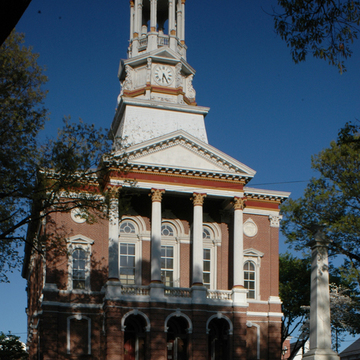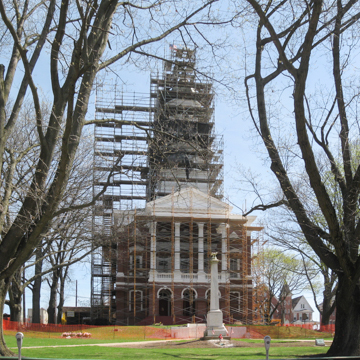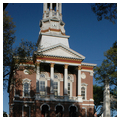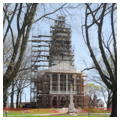The highlight of Mifflintown is the courthouse square that mediates between the commercial center and 3rd Street with its several churches. The courthouse is set back on a gently sloping lawn recalling in its towered facade the eighteenth-century courthouses of eastern Pennsylvania and suggesting that its designer, Harrisburg architect Simon, was invoking Pennsylvania history on the eve of the nation's centennial. Its four fluted iron Corinthian columns demonstrate that no part of Pennsylvania was isolated from the Industrial Revolution. Constructed by Hetrich and Fleisher, the building was originally stuccoed. On the lawn in front of the courthouse is a Civil War monument (1871), an eighteen-foot-high obelisk surmounted by an eagle. At the rear of the courthouse is the county jail designed by Everett Oles in 1833 and still in use. Built of stone, it follows the domestic model of early jails such as that in Milford (PI4).
You are here
Juniata County Courthouse
If SAH Archipedia has been useful to you, please consider supporting it.
SAH Archipedia tells the story of the United States through its buildings, landscapes, and cities. This freely available resource empowers the public with authoritative knowledge that deepens their understanding and appreciation of the built environment. But the Society of Architectural Historians, which created SAH Archipedia with University of Virginia Press, needs your support to maintain the high-caliber research, writing, photography, cartography, editing, design, and programming that make SAH Archipedia a trusted online resource available to all who value the history of place, heritage tourism, and learning.


















